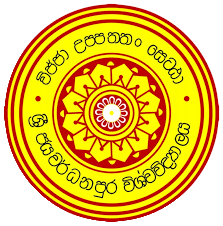KCC.Silva, NGSS.Gamage, Weerasinghe DA.
Crustal Structure Of Mannar Sub Basin - Sri Lanka Using 2D Gravity Modeling, in
6th International Conference on Multidisciplinary Approaches - 2019 ; ICMA.Vol 6. Sri Lanka: University of Sri Jayewardenepura; 2019:5-6.
K.C.C.Silva., N.G.S.Shantha.Gamage, D.A.Weerasinghe.
Estimating Sedimentary Thickness of Lanka Basin using Digitized Scanned Seismic Sections. Journal of National Science Foundation Sri Lanka [Internet]. 2019;47(3):357-362.
Publisher's VersionAbstractIn exploration geophysics, seismic surveys and their interpretations provide the most reliable information of the subsurface structures. Extensive work on the determination of the subsurface structure has been carried out in both Cauvery and Mannar basins of offshore Sri Lanka. Freely available satellite- gravity and magnetic data suggest that the Lanka Basin may have the necessary sediment volume for the occurrence of hydrocarbons. However, without seismic data, this suggestion cannot be tested further. As an alternative to acquiring additional seismic data in the region, this research focused on digitising 50,000 km of vintage seismic lines from the National Geophysical Data Centre (NGDC) data repository and converting them into Seg-Y format. Key seismic horizons on the digitised sections were interpreted to provide details of the seabed and acoustic basement in the time domain. Regional sedimentary thickness maps were compiled in the time domain interpolating the interpreted horizons using ‘kriging’ method. The velocity data acquired in the region were used to convert the maps from time to depth domain. The results indicate that average thickness of sediments in the region varies around 5000 m to 6000 m, where the maximum thickness is around 8000 m in the North Eastern part of the Lanka basin. The thickness maps can be used as a reference dataset to plan commercial seismic surveys in the future for hydrocarbon exploration in the Lanka Basin.
W.A.C.P.Karunasinghe, N.G.S.S.Gamage, D.T.P.K.Withanage.
The commercial viability of producing urea by utilizing natural gas discovered in the marginal reservoir Dorado. Journal of the Sri Lanka Association for the Advancement of Science [Internet]. 2019;2(1):29-37.
Publisher's VersionAbstractThe island nation of Sri Lanka became a plantation economy back in the 19th and 20th centuries,and a significant number of farmers’ livelihoods still depend on agriculture itself. With the low cost of transportation and high solubility, urea fertilizer is leading the industry of agriculture. The current local urea demand is completely met by importations. A constant supply of Natural Gas (NG) is essential to manufacture urea locally. This study mainly focuses on introducing a viable solution for completely importing urea using indigenous gas in place. Amongst the discoveries made around the country, the Dorado reservoir exhibits high quality with a clean, thick deposition. In order to assess the feasibility, the reservoir potential was reviewed and production and supply profiles of NG were analysed by acquiring data regarding local demand quantities. A cost benefit analysis of establishing a urea plant was prepared with the involvement of a German organization. Previously identified economical quantity and price was applied to the Fiscal Regime for the Dorado reservoir with the assistance of PRDS and three case scenarios were proposed. The cases involve developing NG by the investing company with the most economical gas rate identified,i.e., 70 MMScf/d, where around 20 MMScf/d of it will be utilized to manufacture urea. The excess production of NG will either be sold to the government or integrated to a power plant, which is preferred as it introduces additional benefits to the economy. Further analysis can be made depending on different modes and methods of transporting NG and locations of the plants which can manipulate the costs with better focus on achieving higher yield.
A.M.Wijesinghe, C.H.Manathunga, I.L.Wanniarachchi, T.N.Alahakoon, S.Gamage, S.Perera.
Development of Sodium Copper Phosphate Cathode for Sodium Ion Battery. International Journal of Advanced Materials Research [Internet]. 2019;5(3):53-57.
Publisher's VersionAbstractThe technology of Sodium ion battery is expected to replace Lithium-ion battery in near future. The chathodes of Lithium-ion battery are prepared using transition metal composites such as oxides, phosphates and silicates and Sodium-ion batteries are also being tested using such composite chathodes. However, these designed cathodes for sodium-ion batteries show a less capacity. This research was conducted in order to prepare a suitable cathode for a sodium-ion battery. The material was formed through a solid-state reaction of sodium phosphate and copper iodide. The composite which was expected to be formed was sodium copper phosphate. The chathode of the battery was fabricated using mixture of active material, activated carbon and polyvinylidene fluoride (PVDF). Cathode was prepared on an aluminum foil and anode was sodium pressed on a copper plate. The synthesized Material was characterized using powder X-Ray Diffraction (XRD) method. Energy Dispersive X-Ray Analysis (EDEX) was performed in order to identify the chemical composition. Charge discharge curves and cyclic voltammetry was taken to characterize the electrochemical properties of the cell. XRD pattern and EDEX results confirmed that the desired composite was formed. The discharging capacity of the battery was calculated to be 103.12 mA h g-1. The cyclic voltammetry analysis has shown that an oxidation and reduction process occurred while charging and discharging.
S.S.N.Gamage, K.C.C.Silva, D.A.Weerasinghe.
Subsurface structure of the offshore Trincomalee, NE of Sri Lanka. Journal of Indian Geophysical Union [Internet]. 2019;23(3):214-222.
Publisher's Version M.A.C.P.Gunawardana, S.S.N.Gamage.
Recognition of Vowels for Sri Lankan Traditional Pirith Chanting Using Formant Variation. Journal of Technology and Value Addition. 2019;1(1):1-7.

